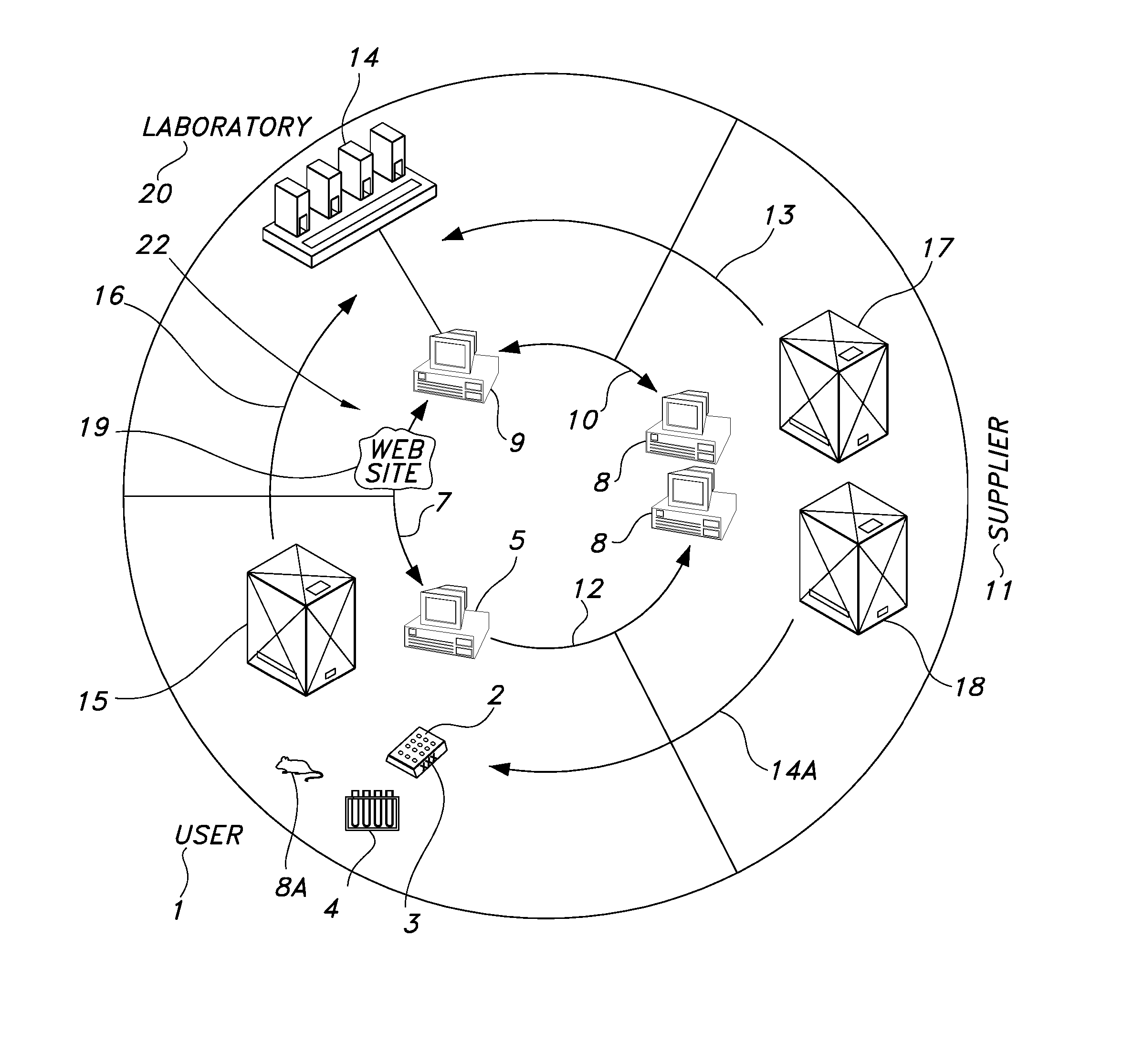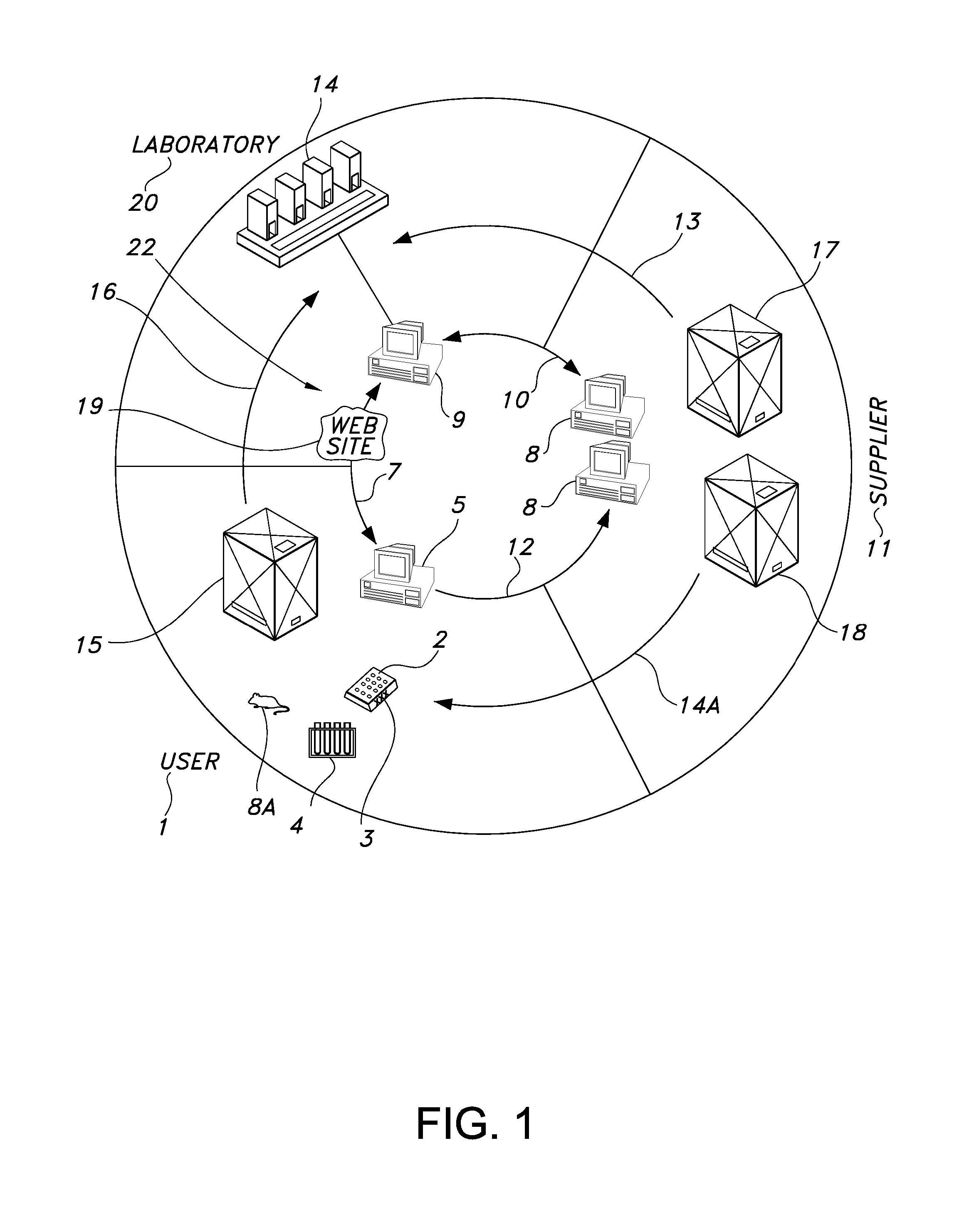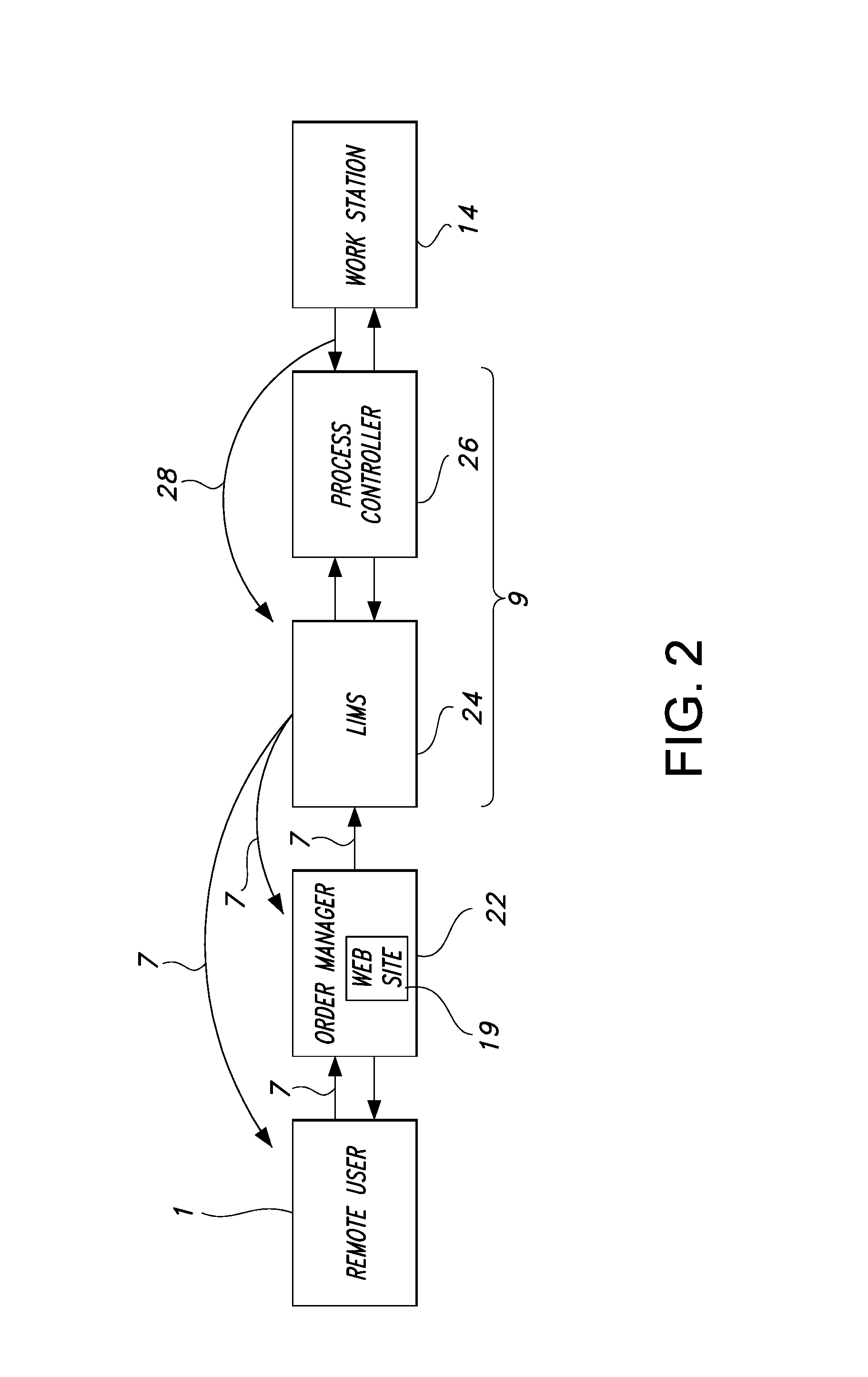Method For Detecting at Least One Designated Genetic Sequence
a genetic sequence and detection method technology, applied in the field of detection methods of at least one designated genetic sequence, can solve the problems of difficult genotyping of transgenic animals, time-consuming and variable manual systems, and difficult work of genomic nucleic acids, and achieve the effect of rapid genotyping and rapid reporting of screening results
- Summary
- Abstract
- Description
- Claims
- Application Information
AI Technical Summary
Benefits of technology
Problems solved by technology
Method used
Image
Examples
example 1
[0208] Mouse Tail Genotyping A biological sample in the form of a mouse tail biopsy is submitted via FedEx (Memphis, Tenn.) overnight delivery to the screening laboratory 20 from the remote user 1. Each sample occupies one well of a 96-well source well container 2.
[0209] The remote user 1 provides the genetic line identification 84. A line includes at least one designated genetic sequence. In the genetic line identification 84 provided by the remote user 1. The remote user 1 selects a designated genetic sequence. The genetic line identification 84 has been previously associated with the designated genetic sequence CRE (SEQ ID NO. 22); Mn1Tel (SEQ ID NO. 38) and p16 (SEQ ID NO. 50).
[0210] A lysis reagent (made of 2.5 μl of proteinase K (VWR EM-24568-3) and 147.5 μl of Nuclei Lysing Solution (Promega Corporation, Madison, Wis. A7943) per sample) is gently mixed and poured into a 25 ml trough or reservoir and is placed on the deck of a Tecan Genesis Workstation (Research Triangle Par...
example 2
[0215] Blood Sample Collection Method: Mouse tails are nicked with a razor blade and the resulting blood droplets are blotted on to filter paper (V&P Scientific Lint Free Blotting Media (114 mm long, 74 mm wide) #VP540D). The samples are placed in individual wells of a Nunc 96-well plate (Fisher Scientific 12-565-368). The well locations are labeled and the plates are transported shipped to the screening laboratory 20.
[0216] The remote user 1 provides the genetic line identification 84. The genetic line in this example has been previously associated by the remote user 1 with the designated genetic sequence for Mn1Tel (SEQ ID NO. 38), CRE (SEQ ID NO. 22) and MHV (SEQ ID NO. 34).
[0217] The number of samples are counted and lysis reagent is made (2.5 μl of proteinase K (VWR EM-24568-3) and 147.5 μl of Nuclei Lysing Solution (Promega Corporation, Madison Wis., A7943) per sample. The solution is gently mixed and poured into a 25 ml trough or reservoir and placed on the deck of a Tecan ...
example 3
[0224] Mouse Embryonic Genotyping Protocol: Mouse embryonic tissue is submitted via FedEx (Memphis, Tenn.) overnight delivery. Each sample occupies one well of a 96-well microwell container 2. The remote user 1 provides the genetic line identification 84. The genetic line in this example has been previously associated with the designated genetic sequence Neomycin (SEQ ID NO. 42) and Six 2 WT (SEQ. ID NO. 62).
[0225] A lysis reagent is made of (2.5 μl of proteinase K (VWR EM-24568-3) and 147.5 μl of Nuclei Lysing Solution (Promega Corporation A7943) per sample). The lysis reagent is gently mixed and poured into a 25 ml trough or reservoir and placed on the deck of a Tecan (Research Triangle Park, N.C.) Genesis Workstation. The liquid handler dispensed 150 μl of solution in to each sample well in the well plate. The well plate is then placed in a 55° C. oven for three hours. Samples are sonicated with a fixed horn sonicator for 3-5 seconds, to yield a sample having at least a portion ...
PUM
| Property | Measurement | Unit |
|---|---|---|
| length | aaaaa | aaaaa |
| transit time | aaaaa | aaaaa |
| temperature | aaaaa | aaaaa |
Abstract
Description
Claims
Application Information
 Login to View More
Login to View More - R&D
- Intellectual Property
- Life Sciences
- Materials
- Tech Scout
- Unparalleled Data Quality
- Higher Quality Content
- 60% Fewer Hallucinations
Browse by: Latest US Patents, China's latest patents, Technical Efficacy Thesaurus, Application Domain, Technology Topic, Popular Technical Reports.
© 2025 PatSnap. All rights reserved.Legal|Privacy policy|Modern Slavery Act Transparency Statement|Sitemap|About US| Contact US: help@patsnap.com



